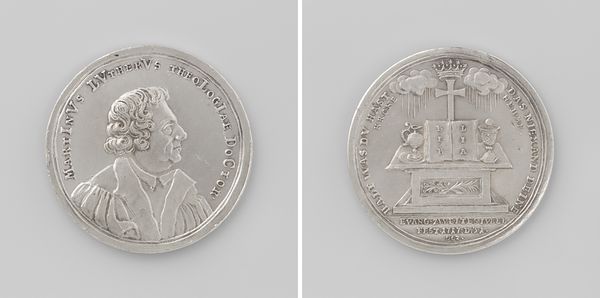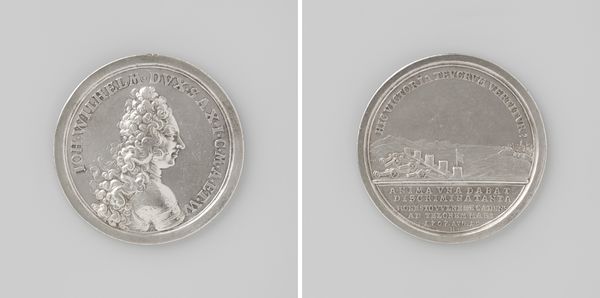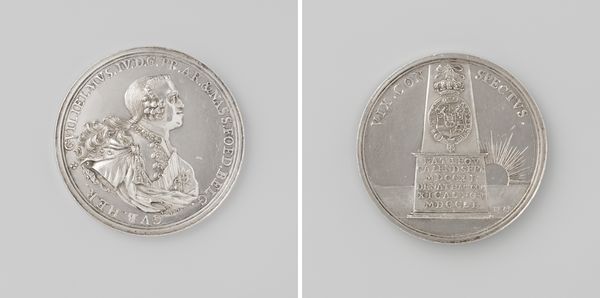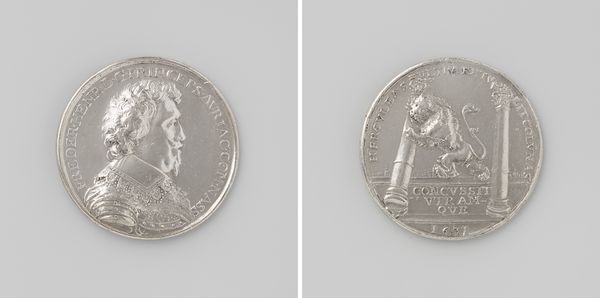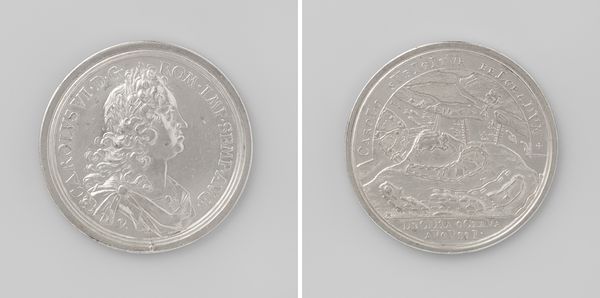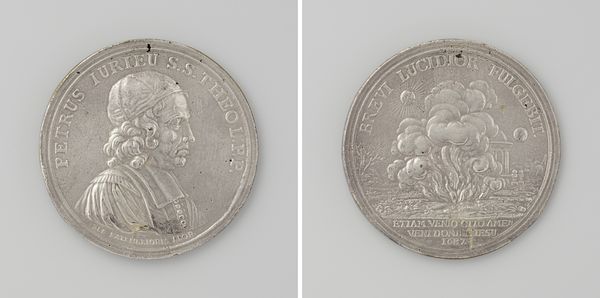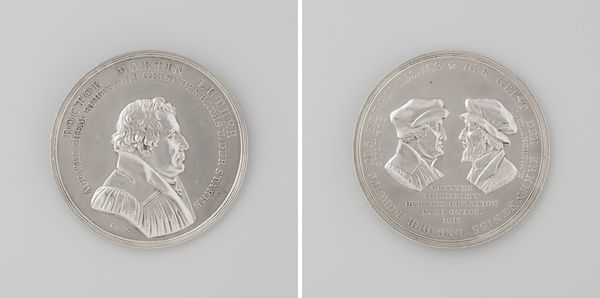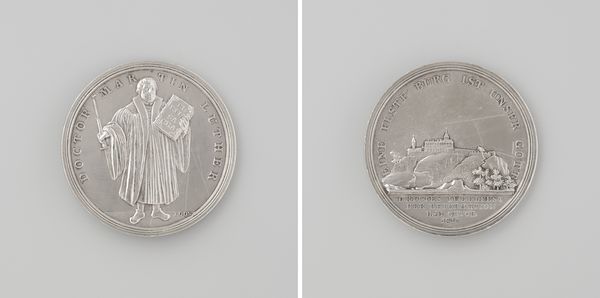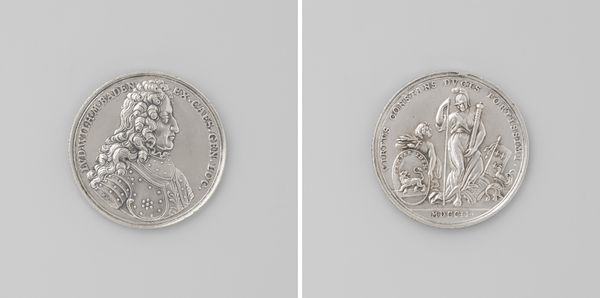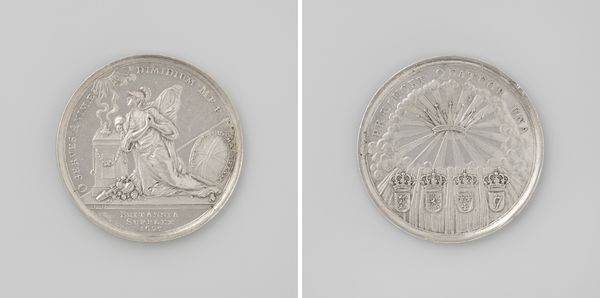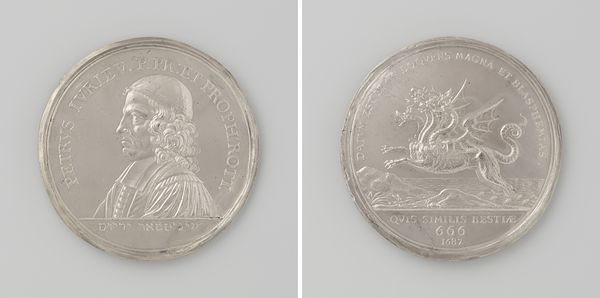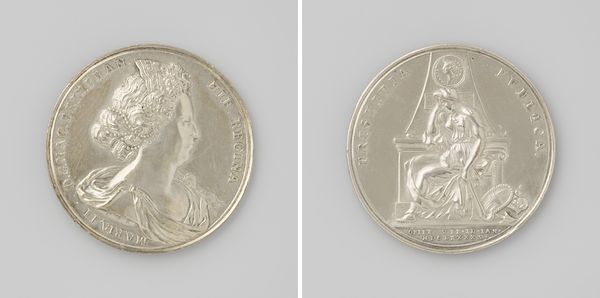
metal, engraving
#
portrait
#
baroque
#
metal
#
historical fashion
#
history-painting
#
engraving
Dimensions: diameter 4.3 cm, weight 29.34 gr
Copyright: Rijks Museum: Open Domain
Curator: This intriguing metal engraving from 1669, created by Jan (I) Smeltzing, commemorates the "Death of Johannes Coccejus, Professor in Leiden." The Baroque style is apparent. Editor: It’s austere, isn’t it? The monochromatic metal feels cold, yet the detail in the engraving is impressive, almost obsessively rendered. There's a pronounced gravity. Curator: Absolutely. We can consider this piece through the lens of 17th-century Dutch society and the important role of theology and scholarship. Commemorative medals such as this one often served as symbols of status, memory, and the public recognition of significant figures. The front depicts a solemn portrait, but note the imagery on the reverse. Editor: The open book wreathed in clouds is compelling. I am drawn to the craftsmanship of this engraving, the fineness of the lines, and the time that must have been invested in this piece. We see the dove in the sky overhead. Who was Smeltzing and how did his workshop operate? Where would he source the metal? And, given the context, might he have specialized in religious subjects? Curator: Good questions. The open book, often associated with scripture, is shown ascending towards the heavens signified by that very dove of the Holy Spirit—so Smeltzing very clearly worked under very well established iconographic tropes of the day. This wasn't just an aesthetic object, but one deeply enmeshed with prevailing belief systems, used to uphold theological institutions and immortalize its prominent leaders like Coccejus. We must remember Leiden was a real hub of not just artistic production but also centers of academic learning at that moment. Editor: I appreciate how unpacking this piece requires us to think about both the specific techniques of metal engraving and the larger systems of power at play, and its religious context too. It really throws light on artistic labor back in the 17th century and the market that arose for that craft, at all. Curator: Indeed. Examining it reveals a rich tapestry of artistic process and cultural meaning—one that can reshape our understanding of religious life, portraiture and politics in the Dutch Golden Age. Editor: And in doing so, the role metal craftwork had in preserving it!
Comments
No comments
Be the first to comment and join the conversation on the ultimate creative platform.
